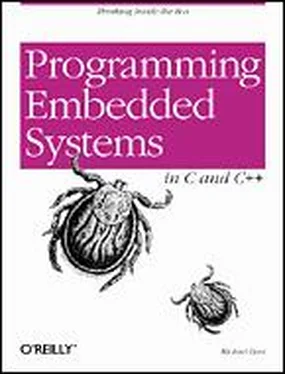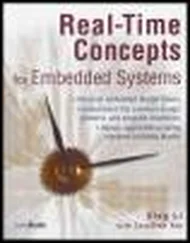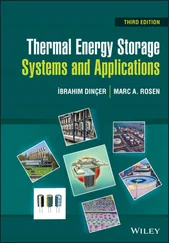Once you've got the automatic optimizations working, here are some tips for further reducing the size of your code by hand:
Avoid standard library routines
One of the best things you can do to reduce the size of your program is to avoid using large standard library routines. Many of the largest are expensive only because they try to handle all possible cases. It might be possible to implement a subset of the functionality yourself with significantly less code. For example, the standard C library's sprintf routine is notoriously large. Much of this bulk is located within the floating-point manipulation routines on which it depends. But if you don't need to format and display floating-point values ( %f or %d ), you could write your own integer-only version of sprintf and save several kilobytes of code space. In fact, a few implementations of the standard C library (Cygnus' newlib comes to mind) include just such a function, called siprintf .
Native word size
Every processor has a native word size, and the ANSI C and C++ standards state that data type int must always map to that size. Manipulation of smaller and larger data types sometimes requires the use of additional machine-language instructions. By consistently using int whenever possible in your program, you might be able to shave a precious few hundred bytes from your program.
Goto statements
As with global variables, good software engineering practice dictates against the use of this technique. But in a pinch, goto statements can be used to remove complicated control structures or to share a block of oft repeated code.
In addition to these techniques, several of the ones described in the previous section could be helpful, specifically table lookups, hand-coded assembly, register variables, and global variables. Of these, the use of hand-coded assembly will usually yield the largest decrease in code size.
10.3 Reducing Memory Usage
In some cases, it is RAM rather than ROM that is the limiting factor for your application. In these cases, you'll want to reduce your dependence on global data, the stack, and the heap. These are all optimizations better made by the programmer than by the compiler.
Because ROM is usually cheaper than RAM (on a per-byte basis), one acceptable strategy for reducing the amount of global data might be to move constant data into ROM. This can be done automatically by the compiler if you declare all of your constant data with the keyword const . Most C/C++ compilers place all of the constant global data they encounter into a special data segment that is recognizable to the locator as ROM-able. This technique is most valuable if there are lots of strings or table-oriented data that does not change at runtime.
If some of the data is fixed once the program is running but not necessarily constant, the constant data segment could be placed in a hybrid memory device instead. This memory device could then be updated over a network or by a technician assigned to make the change. An example of such data is the sales tax rate for each locale in which your product will be deployed. If a tax rate changes, the memory device can be updated, but additional RAM can be saved in the meantime.
Stack size reductions can also lower your program's RAM requirement. One way to figure out exactly how much stack you need is to fill the entire memory area reserved for the stack with a special data pattern. Then, after the software has been running for a while-preferably under both normal and stressful conditions — use a debugger to examine the modified stack. The part of the stack memory area that still contains your special data pattern has never been overwritten, so it is safe to reduce the size of the stack area by that amount. [26] Of course, you might want to leave a little extra space on the stack — just in case your testing didn't last long enough or did not accurately reflect all possible runtime scenarios. Never forget that a stack overflow is a potentially fatal event for your software and to be avoided at all costs.
Be especially conscious of stack space if you are using a real-time operating system. Most operating systems create a separate stack for each task. These stacks are used for function calls and interrupt service routines that occur within the context of a task. You can determine the amount of stack required for each task stack in the manner described earlier. You might also try to reduce the number of tasks or switch to an operating system that has a separate "interrupt stack" for execution of all interrupt service routines. The latter method can significantly reduce the stack size requirement of each task.
The size of the heap is limited to the amount of ram left over after all of the global data and stack space has been allocated. If the heap is too small, your program will not be able to allocate memory when it is needed, so always be sure to compare the result of malloc or new with NULL before dereferencing it. if you've tried all of these suggestions and your program is still requiring too much memory, you might have no choice but to eliminate the heap altogether.
10.4 Limiting the Impact of C++
One of the biggest issues I faced upon deciding to write this book was whether or not to include C++ in the discussion. Despite my familiarity with C++, I had written almost all of my embedded software in C and assembly. In addition, there has been much debate within the embedded software community about whether C++ is worth the performance penalty. It is generally agreed that C++ programs produce larger executables that run more slowly than programs written entirely in C. However, C++ has many benefits for the programmer, and I wanted to talk about some of those benefits in the book. So I ultimately decided to include C++ in the discussion, but to use in my examples only those features with the least performance penalty.
I believe that many readers will face the same issue in their own embedded systems programming. Before ending the book, I wanted to briefly justify each of the C++ features I have used and to warn you about some of the more expensive features that I did not use.
The Embedded C++ Standard
You might be wondering why the creators of the C++ language included so many expensive — in terms of execution time and code size-features. You are not alone; people around the world have wondered the same thing-especially the users of C++ for embedded programming. Many of these expensive features are recent additions that are neither strictly necessary nor part of the original C++ specification. These features have been added one by one as part of the ongoing "standardization" process.
In 1996, a group of Japanese processor vendors joined together to define a subset of the C++ language and libraries that is better suited for embedded software development. They call their new industry standard Embedded C++. Surprisingly, for its young age, it has already generated a great deal of interest and excitement within the C++ user community.
A proper subset of the draft C++ standard, Embedded C++ omits pretty much anything that can be left out without limiting the expressiveness of the underlying language. This includes not only expensive features like multiple inheritance, virtual base classes, runtime type identification, and exception handling, but also some of the newest additions like templates, namespaces, and new-style casts. What's left is a simpler version of C++ that is still object-oriented and a superset of C, but with significantly less runtime overhead and smaller runtime libraries.
Читать дальше












